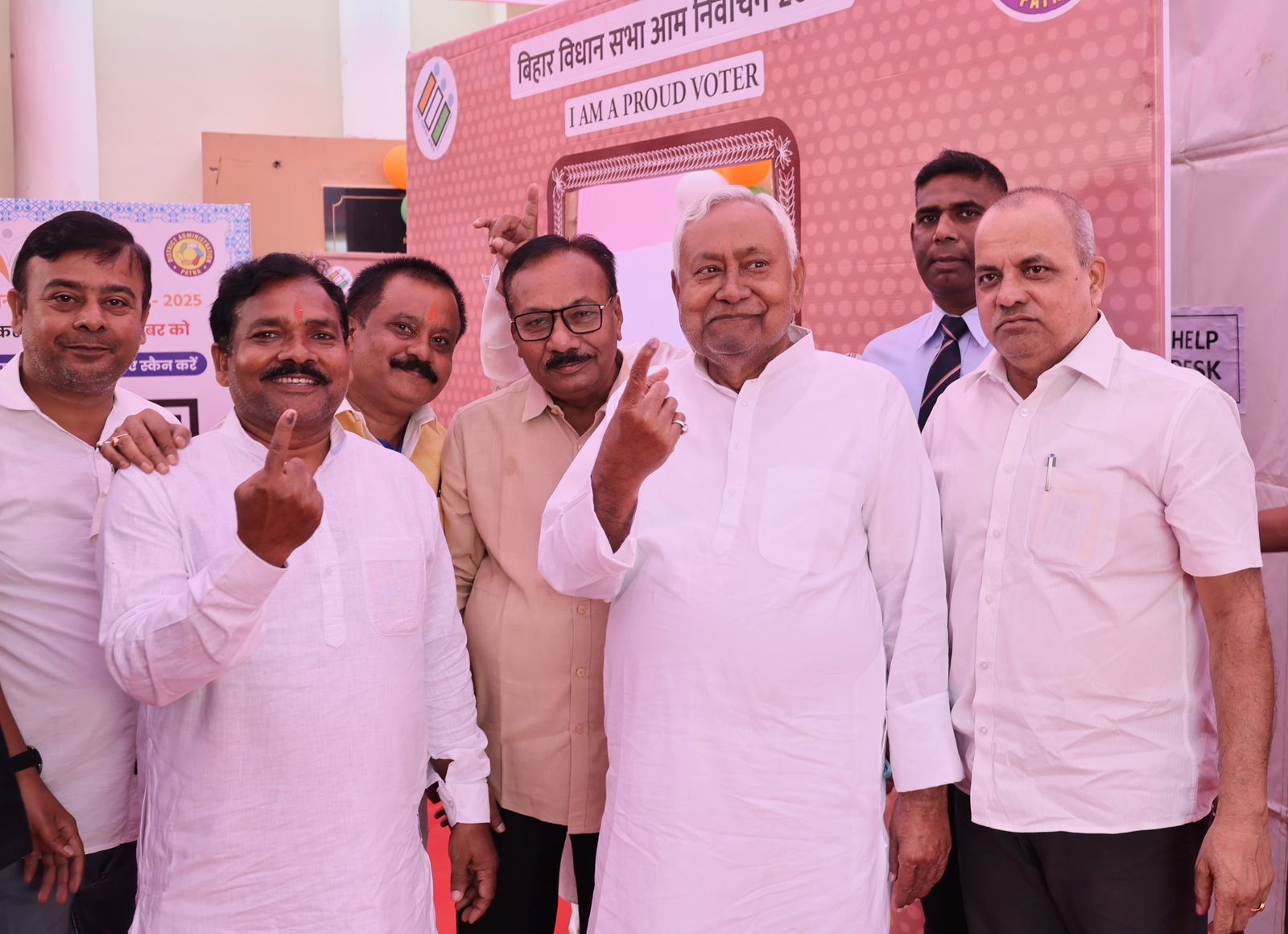Bihar on the Brink: Phase 2 Turns Bihar’s 2025 Polls Into a War Over Identity and Power
A politically charged atmosphere has gripped the state of Bihar, fuelled by high-decibel campaigns, allegations of voter suppression, and the deployment of polarising narratives. The first phase of polling on November 6 recorded a historic 65.08% voter turnout--an electoral milestone that set the tone for a fiercely contested race across the remaining 122 constituencies voting on November 11.
 |
| Image Source: Nitish Kumar |
PM Modi has framed infiltration as a "national challenge" and promised decisive action, referring to his government’s crackdown on illegal migrants as part of a broader effort to “lock out infiltrators,” a message repeated by Shah, who has positioned the BJP as the only bulwark against a return of “jungle raj.”
The opposition INDIA bloc, led by the Congress and Rashtriya Janata Dal, has countered this strategy with sharp allegations of institutional misuse and voter manipulation. Rahul Gandhi accused the Modi-Shah duo of enforcing a “real jungle raj” by misusing enforcement agencies, while Congress general secretary Priyanka Gandhi alleged systemic vote theft, referencing a 65-lakh voter reduction in Bihar’s electoral rolls after the Special Intensive Revision (SIR).
The Congress has promised a monthly support of ₹2,500 for poor women and free medical treatment up to ₹20 lakh under a prospective INDIA government.
In parallel, RJD’s Tejashwi Yadav has ramped up his personal campaign, targeting the NDA for failing on employment and youth welfare. Claiming that 30 helicopters had been deployed to counter him, the 37-year-old opposition CM candidate positioned himself as an "unstoppable Bihari" and urged voters to give him just "20 months" to deliver results.
He played the “son-of-the-soil” card, asserting that Bihar must be led by a local, not “outsiders,” and alleged voting was being deliberately slowed down in RJD strongholds via faulty EVMs--a charge denied by the Election Commission.
Adding to the tension, the Election Commission was forced to suspend an assistant returning officer after a bundle of VVPAT slips--later confirmed to be from mock polls--was found dumped on a roadside in Samastipur.
While the EC maintained that the integrity of the actual vote was intact, the incident has added fuel to an already incendiary atmosphere.
Meanwhile, the BJP has pivoted its campaign narrative from development, which dominated Phase 1, to identity and security in the border regions voting in Phase 2.
The Seemanchal belt--with its high Muslim population, cross-border vulnerabilities, and historical support for the opposition--is being targeted with the BJP’s infiltration rhetoric, a strategy reminiscent of its campaigns in Assam and West Bengal.
Union minister Amit Shah accused Congress and RJD leaders of “welcoming infiltrators” and “taking out yatras in their support,” linking their actions to lawlessness and vote bank politics.
But, beneath the polarising rhetoric lies a battle of fatigue versus momentum. JD(U) leader and Bihar CM Nitish Kumar, once hailed as “Sushashan Babu,” now faces an electorate questioning two decades of governance.
With approval ratings slipping and political capital dwindling, the JD(U) is increasingly leaning on Modi’s popularity and the BJP’s narrative muscle to stay relevant.
Having lost its dominant partner status in the alliance, Nitish is arguably contesting his toughest election yet as a junior partner in both seat share and perception.
While PM Modi continues to invoke Operation Sindoor and national security successes, critics question the state’s economic stagnation and lagging development indicators. But, the NDA is banking on a mix of welfare schemes, infrastructure claims, and Modi’s nationalist appeal to override local discontent.
Voters are being offered a choice between the BJP’s promise of continuity and national security, and the opposition’s pitch for change, economic relief, and democratic restoration.
The geography of Bihar's elections now mirrors its thematic split. The interior constituencies voted largely on welfare and governance, while the outer ring -- demographically diverse and politically volatile -- is seeing campaigns dominated by migration, infiltration, and identity.
How these narratives play out at the ballot box may set the tone for national politics heading into the 2029 general election. Counting will take place on November 14. Until then, Bihar remains the epicentre of India’s most consequential political battle of 2025.
